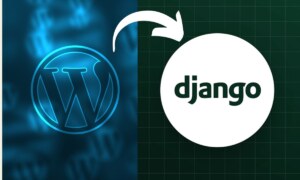What is SEO and How It Works?
Image Credit: Ownly Digital
SEO stands for search engine optimization, which is the process of optimizing your website to get organic or unpaid traffic from the search engine results page. If your business isn’t online then You’re Losing Potential Customers.
The three key parts of any Website SEO
Generally, you can start the 3 search engine optimisation (SEO) areas below.
-
Technical SEO.
-
On-page SEO.
-
Off-page SEO.
1. Technical SEO
If you would plan to buy a house then deffinitely you should check the location and connectivity, right?
Thus, the navigation and crawling play a significant role in your website’s SEO.
It simply means the website should have a good structure (Categorized & Organized) so that it is easy for both users and the search engine to understand what kind of the website is.
And, as illustrated in the chart below, one should not have more than three levels of pages. In other words, site visitors should only have to click three times (at most) to find what they want.
Below we list the three parts of technical SEO
Site map
A site map is a list of all the pages on your website and it helps Google index your web pages easily. It allows webmasters to include additional information about each URL.
SSL certificate
SSL Certificates are small data files that digitally bind a cryptographic key to an organization’s details. When installed on a web server, it activates the https protocol and allows secure connections from a web server to a browser.
Google has confirmed that the SSL certificate is a site ranking factor. In its attempt to provide the best service to its users, Google does not support any website that does not protect their visitors data privacy.
If your website does not have SSL certificate, Google will label it “Not secure.”
Site speed and uptime
Site speed and uptime are also the most important factors of website SEO.If your website is down most of the time, then Google might even de-index your website ranking if you didn’t fix the issue in time. So make sure that your hosting provider guarantees at least 99.9% site uptime. If your current web host cannot make such a guarantee, consider switching to one that can assure uptime guarantee.
2. On-page SEO
On-page SEO is the practice of optimizing individual website pages in order to rank higher and earn more relevant traffic in search engines. On-page refers to both the content and HTML source code of a page that can be optimized. You should optimize your website titles, descriptions and content for getting higher rank and more traffic. Keywords also play a vital role in on-page site optimization. A keyword is a search term that user type into the search engine while they looking for any information.
3. Off-page SEO
Off-page, SEO is all about links building and social media marketing.
Link Building
Link building is the most popular and effective off-Page SEO approach. Link building is the process of getting other websites to link back to your website.
There are number of ways to increase link count in Google webmaster. The most popular ways are:
Blog Directories: something like yellow pages but each post or entry had a link pointing to a website. If you submit your blog or website to blog directories then it will help you a lot to improve your Search Engine Result Page.
Forum Posting: Many people are commenting on forums for the idea of getting a link back to their website.Forum Posting is an ideal method to quickly build inbound links to the website.
Blog Commenting: Blog commenting in SEO is the process of posting comments on website pages with a backlink to your own website.
Article Directories: If you will publish your articles in article directories you could get a link back to your website.
Social Media Marketing
Social media marketing is one of the important part of “off-site SEO” It connect with your audience to build your brand, increase sales, and drive website traffic. Social media promotion can also boost SEO.



